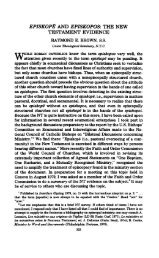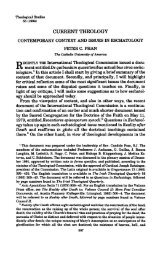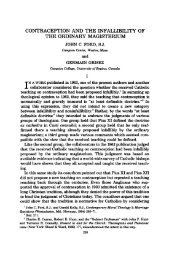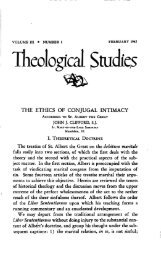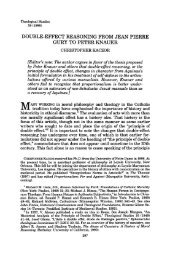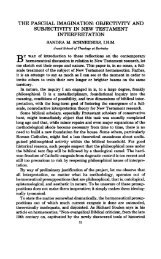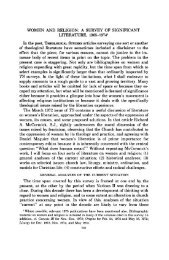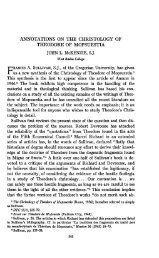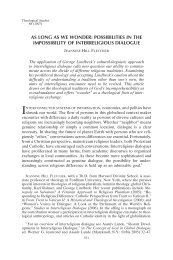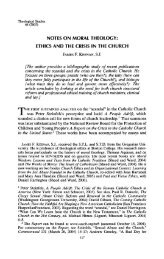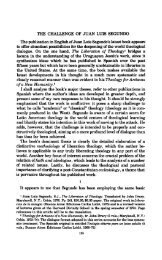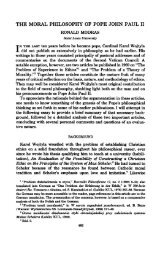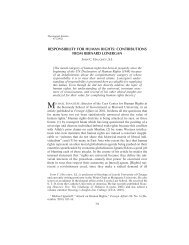SYMBOL, MYTH, AND THE BIBLICAL REVELATION AVERY ...
SYMBOL, MYTH, AND THE BIBLICAL REVELATION AVERY ...
SYMBOL, MYTH, AND THE BIBLICAL REVELATION AVERY ...
Create successful ePaper yourself
Turn your PDF publications into a flip-book with our unique Google optimized e-Paper software.
<strong>SYMBOL</strong>, <strong>MYTH</strong>, <strong>AND</strong> <strong>THE</strong> <strong>BIBLICAL</strong> <strong>REVELATION</strong> 25<br />
nently entrusted to the Church for its study, contemplation, consolation,<br />
and guidance, "that the man of God may be made perfect,<br />
equipped for every good work" (2 Tim 3:17).<br />
It will, of course, be objected that the symbols of the Bible are based<br />
on a very naive and archaic world picture. But are they for that reason<br />
less valid? The ancient cosmology, which pictures the divine abode as<br />
above and the underworld below, while it is scientifically obsolete,<br />
retains much of its power as symbol. The picture of a God high above<br />
us corresponds well with the Christian doctrine of His transcendence.<br />
So likewise, the simple relationships of pastoral and patriarchal life,<br />
which supply so many of the biblical images, have close counterparts<br />
in ordinary human experience. Eliade can therefore say:<br />
We may even wonder whether the accessibility of Christianity may not be attributable<br />
in great measure to its symbolism, whether the universal Images that it takes<br />
up in its turn have not considerably facilitated the diffusion of its message. For, to<br />
the non-Christian, one question occurs first of all: how can a local history—that<br />
of the Jewish people and of the first Judaeo-Christian communities—how can this<br />
claim to have become the pattern for all divine manifestation in concrete, historical<br />
time? I believe we have pointed to the answer: this sacred history, although in the<br />
eyes of an alien observer it looks like a local history, is also an exemplary history,<br />
because it takes up and perfects these transtemporal Images. 48<br />
It seems clear, on the other hand, that the biblical images do not<br />
furnish sufficient materials for evangelizing the increasingly secular<br />
and urban world in which we live. It is therefore urgent, as Pope John<br />
XXIII declared, to restate the Christian message in "the literary forms<br />
of modern thought." But the challenge is not new. At no time in her<br />
history has the Church been content to reproduce mechanically the<br />
symbols of the Bible. It continually forges new ciphers to convey more<br />
adequately that which, in its full reality, bursts the bonds of any<br />
human language.<br />
Abundant examples of the incessant creativity of the Christian<br />
imagination could be found in the visual arts or in poets such as Dante<br />
and Milton. To adduce but one example, we may note how the medieval<br />
artists, relying on the bestiaries of the time, depicted Christ as a<br />
pelican, feeding its young with its own blood. The image helped to<br />
bring home to medieval man what was already implied in the biblical<br />
Images and Symbols, pp. 168 f.



